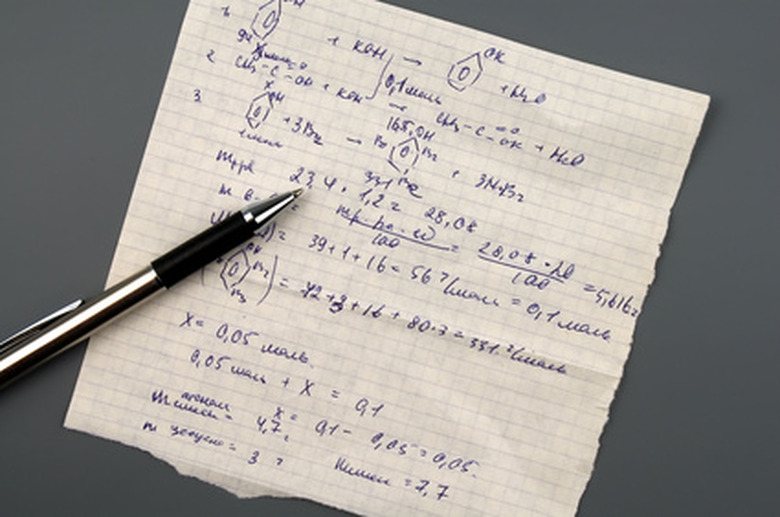How To Solve A Matrix
A matrix is a table of values written in row and column form that represent one or more linear algebraic equations. There are many different ways to solve a matrix depending on whether you are given linear equations, and your instructed mathematical operation such as multiplication, addition, subtraction and even inverse. Solving matrices may seem complicated at first, but with diligent studying and practice you'll be able to work through any matrix problem presented to you.
1. Take the problem and rewrite the linear equation into matrix form. You will have two or more problems written out in typical algebraic form, or linearly. To rewrite these equations into matrix form, start by writing the numbers left of the equal sign in equation 1 over the numbers left of the equal sign in equation 2. This section of the matrix is referred to as "A." 2. Next, write letter x over letter y. This section of the matrix is "X." 3. Finally, write the number right of the equal sign in equation 1 over the number right of the equal sign in equation 2. This last section is referred to as "B." 4. Determine the inverse of the A portion of the matrix. Since the inverse of a function is the function divided by 1, you can find the inverse of A by placing a 1 over the cross-multiplied value of A. Refer to the Resource section for a specific example of this. 5. Multiply variables A and B to solve the matrix. Your answer should have both an x component and a y component, which are the answers for x and y. Refer to the resource links for an example of a solved matrix problem.
For a different type of example, view the video below:
**Tip:** There are many different ways to approach a matrix problem. For additional information on how to solve matrix problems through addition and subtraction, click the link below titled, "More Matrix Problems."
Cite This Article
MLA
Writer, Contributing. "How To Solve A Matrix" sciencing.com, https://www.sciencing.com/solve-matrix-4557439/. 12 November 2018.
APA
Writer, Contributing. (2018, November 12). How To Solve A Matrix. sciencing.com. Retrieved from https://www.sciencing.com/solve-matrix-4557439/
Chicago
Writer, Contributing. How To Solve A Matrix last modified August 30, 2022. https://www.sciencing.com/solve-matrix-4557439/
